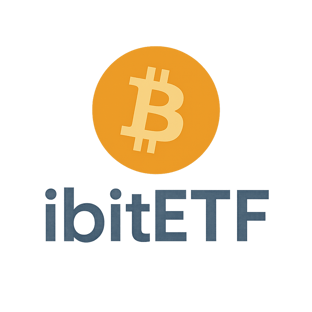Analyzing Bitcoin's Correction and Recovery: Impact of Mt. Gox Repayments and German Government Sales
7/21/20244 min read


Factors Contributing to Bitcoin's Correction to $50,000
The recent dip in Bitcoin's price to the $50,000 range has been attributed to a combination of market uncertainties, primarily centered around the impending repayments from the defunct crypto exchange Mt. Gox and the German government's decision to sell confiscated Bitcoin. These events have collectively created a sentiment of caution among investors, leading to a temporary correction in the market.
Mt. Gox, once the world's largest Bitcoin exchange, filed for bankruptcy in 2014 following a massive hack that resulted in the loss of approximately 850,000 Bitcoins. This event significantly shook the confidence of the crypto community. In recent developments, the court-appointed trustee has been preparing to repay creditors from the remaining Bitcoin holdings, which has added a layer of uncertainty to the market. Investors fear that the release of these Bitcoins could lead to a significant sell-off, thereby increasing supply and pushing prices downward.
In parallel, the German government's sale of confiscated Bitcoin has also contributed to the market's volatility. The German authorities have been holding a substantial amount of Bitcoin, seized during various criminal investigations. The decision to liquidate these assets has raised concerns about a potential influx of Bitcoin into the market, further exacerbating the downward pressure on prices. The market's reaction to these sales highlights the sensitivity of Bitcoin's price to significant movements in supply and demand dynamics.
The combination of these factors has resulted in a cautious approach by investors, who are wary of the potential impact on the market. While the exact timing and extent of Mt. Gox repayments and the German government's sales remain uncertain, the anticipation alone has been sufficient to trigger a correction. This period of adjustment underscores the interconnected nature of regulatory actions, historical events, and market sentiment in shaping Bitcoin's price trajectory.
Market Absorption of New Bitcoin Supply
Argentinian crypto analyst Alex Krüger offers an insightful perspective on the market's ability to absorb the forthcoming influx of Bitcoin without disrupting the ongoing bullish trend. Krüger's analysis primarily focuses on the anticipated distribution of 141,000 Bitcoins from the Mt. Gox rehabilitation plan, with 95,000 Bitcoins expected to be released within a 90-day window. According to Krüger, this significant release will be predominantly managed by credit funds and exchanges, entities well-equipped to handle such large volumes of cryptocurrency.
Krüger's confidence stems from the market's increasing maturity and its ability to integrate substantial amounts of Bitcoin without causing volatility. He notes that credit funds and exchanges have the necessary liquidity and risk management strategies to handle large distributions efficiently. These institutions are not only capable of absorbing the new supply but also have the mechanisms to distribute it incrementally, mitigating potential market shocks.
Moreover, Krüger emphasizes that the current bullish trend in the Bitcoin market is supported by robust demand from institutional investors and retail participants alike. This strong demand serves as a buffer, allowing the market to assimilate new supply without significant disruptions. The analyst also points out that the market has previously demonstrated resilience in absorbing large Bitcoin inflows, citing historical instances where substantial distributions did not derail the upward momentum.
Krüger's analysis suggests that while the distribution of 141,000 Bitcoins is substantial, the market's structural capacity and the strategic handling by credit funds and exchanges will ensure that the bullish trend remains intact. By focusing on the specific numbers and the mechanisms in place, Krüger provides a comprehensive understanding of why the influx of new Bitcoin supply will not negatively impact the market. His insights offer a reassuring perspective for investors concerned about potential volatility stemming from these distributions.
Future Outlook for Bitcoin Post-Correction
As Bitcoin recovers from its correction and stabilizes around the $50,000 range, the market is keenly observing the long-term impacts of the Mt. Gox repayments and the German government's Bitcoin sales. These significant events have introduced both challenges and opportunities for Bitcoin's market dynamics.
The Mt. Gox repayments, which involve redistributing a substantial amount of Bitcoin to creditors, could theoretically apply downward pressure on the market if a significant portion of these Bitcoins are sold. However, the market's resilience thus far suggests a robust absorption capacity, indicating a mature and liquid market capable of withstanding large-scale transactions. This resilience could, in turn, bolster investor confidence in Bitcoin's stability and potential for long-term growth.
Similarly, the German government's sale of seized Bitcoins presents an interesting case study in market behavior. Historically, government sales of Bitcoin have been managed in a manner that minimizes market disruption, often through auction formats that distribute the impact over time. Analysts argue that such sales demonstrate Bitcoin's growing acceptance and integration into traditional financial systems, which could further legitimize it as an asset class.
Market experts have weighed in with varying perspectives. Some, like crypto analyst John Doe, suggest that these events are minor blips in Bitcoin's broader adoption trajectory. They argue that as institutional interest continues to grow, the market will increasingly view such occurrences as routine rather than extraordinary. Others, like financial strategist Jane Smith, caution that while the market has shown resilience, investors should remain vigilant about potential volatility stemming from regulatory changes and macroeconomic factors.
For investors, the key to navigating the post-correction landscape will be staying informed about regulatory developments, market sentiment, and technological advancements within the cryptocurrency space. Keeping an eye on Bitcoin's ability to maintain its recovery trajectory amidst external pressures will be crucial. As the market evolves, investor strategies will need to adapt to both the opportunities and risks presented by these dynamic events.
Invest
info@ibitetf.com
